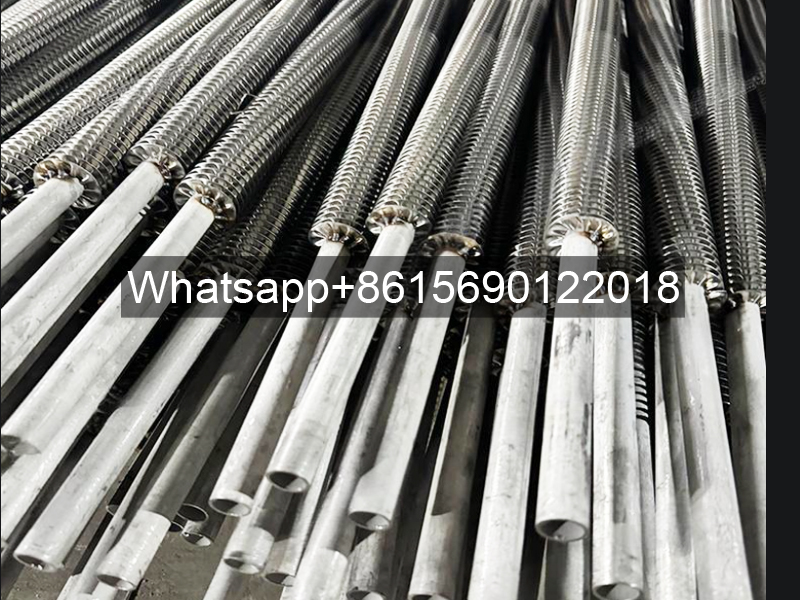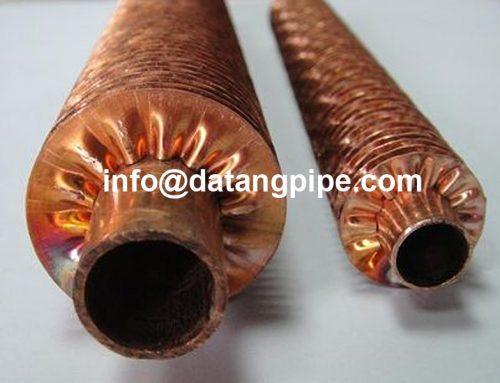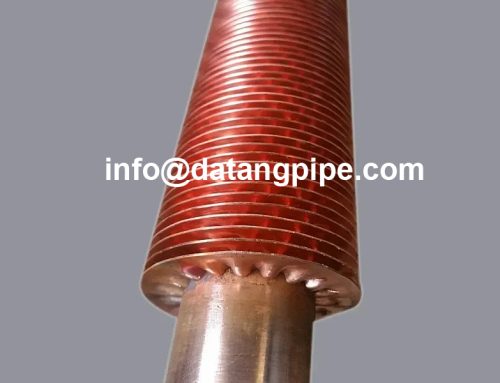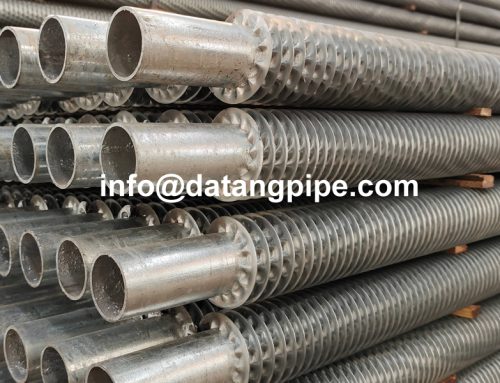Project Description

Product Name: Stainless Steel Finned Tubes Manufacturer and Supplier
- Leave Your Message
What Are Stainless Steel Fin Tubes?
Stainless steel fin tubes (or finned tubing) are specialized tubes featuring external fins or ridges. These fins increase the surface area of the tube, enabling faster and more efficient heat transfer between the fluid inside the tube and the surrounding environment. They are widely used in tube fin heat exchangers, which are devices that transfer heat from one medium to another without direct contact.
Stainless Steel Fin Tube for Heat Exchanger
The industry regularly opts for the use of a stainless steel finned tube. They serve, among other things, as air-cooled heat exchangers within the choice for stainless steel finned tubes offers the industry several advantages. Datang is your trusted supplier of these parts. In addition to stainless steel finned tubes, we offer you various other parts.
Key Components Of Fin Tubes
Base Tube: The core stainless steel tube that carries the fluid (liquid or gas).
Fins: Extended surfaces (helical, longitudinal, or serrated) welded, extruded, or embedded onto the tube.
Protective Coating: Optional anti-corrosion layers for harsh environments.
Stainless steel is the material of choice due to its durability, resistance to rust, and ability to withstand extreme temperatures and pressures.
| Material | Seamless Stainless Steel – SA-213 TP304, TP304L, TP316, TP316L Welded Stainless Steel – SA-249 TP304, TP304L, TP316, TP316L |
| Diameter | 12.70mm, 15.88mm, 19.05mm, 22.20mm, 25.40mm & 38.10mm |
| Wall thickness | 1.42mm up to 3.25mm |
| No. of Fins per Inch | 19, 26, 28, 32 FPI |
–Stainless Steel Low Fin Tubes are available with exact lengths required by customer, maximum upto 20 Meters.
–Stainless Steel Low Finned Tubes are available with plain portion at both ends, as per customer specification.
–Stainless Steel Fin Tubes are available with Intermediate landings (plain portion for baffle sheet support), as per customer requirement.
–Stainless Steel Fin Tubes will be supplied, duly Hydro Tested, after finning. Stainless Steel Fin Tubes will be supplied in “As Finned Temper”.
–We shall supply Stainless Steel Fin Tubes, duly inspected and approved by Customer or any Third Party Inspection Agency, as per customer specific requirement, at our end before dispatch. We shall provide MTC alongwith our supply documents.
Benefits Of Stainless Steel Fin Tubes
Superior Heat Transfer: Fins can improve efficiency by 5–10x compared to bare tubes.
Corrosion Resistance: Ideal for marine, chemical, or outdoor applications.
Durability: Withstand temperatures up to 900°C (1652°F) and pressures exceeding 100 bar.
Low Maintenance: Resistant to fouling and scaling, reducing cleaning frequency.
Eco-Friendly: Improve energy efficiency, lowering carbon footprints.
Composition and Properties of Stainless Steel
Stainless steel is a durable alloy primarily composed of chromium, iron, and nickel, along with other elements that enhance its strength and resistance to corrosion and environmental factors. The presence of a minimum of 10.5% chromium forms a passive oxide layer on the surface, preventing rust and corrosion. Depending on the specific application, different grades of stainless steel—such as 304, 316, and 321—are chosen for their distinct properties like high-temperature resistance, enhanced corrosion protection, and mechanical robustness.
Stainless Steel’s High Melting Point and Thermal Stability
Stainless steel has a high melting point, typically above 1400°C, which makes it highly suitable for applications involving high heat exposure. Its excellent thermal stability ensures that the material does not degrade or weaken under extreme heat conditions, making it a reliable choice for industries requiring consistent heat transfer efficiency.
How Do Stainless Steel Fin Tubes Work?
The primary purpose of fin tubes is to amplify heat transfer efficiency. Here’s how they achieve this:
1. Increased Surface Area
The fins attached to the base tube expand the contact area between the tube and the surrounding air or fluid. For example, a smooth tube might have a surface area of 1 m², but adding fins could boost it to 5 m² or more. This larger area allows heat to dissipate or absorb faster.
2. Turbulence Creation
Fins disrupt smooth airflow around the tube, creating turbulence. Turbulent flow enhances heat transfer by preventing stagnant air layers (boundary layers) from insulating the tube.
3. Material Advantages
Stainless steel’s high thermal conductivity ensures heat moves quickly from the fluid inside the tube to the fins. Its corrosion resistance also ensures longevity, even in humid, acidic, or high-salinity environments.
4. Optimized Fluid Dynamics
In fin tubes for heat exchangers, engineers design fin patterns (e.g., helical or longitudinal) to match the flow rate and temperature of the fluid. For instance, helical fins suit high-velocity gases, while longitudinal fins work better with slow-moving liquids.
Applications Of Stainless Steel Fin Tubes
These tubes are versatile and cater to industries where efficient heat exchange is non-negotiable:
1. HVAC Systems
In air conditioners and heaters, finned tubing improves heat exchange between refrigerant and air, reducing energy consumption.
2. Power Plants
They cool steam in condensers or recover waste heat from exhaust gases, boosting plant efficiency.
3. Oil & Gas Refineries
Stainless steel tubes handle corrosive fluids and high temperatures in heat recovery systems.
4. Chemical Processing
Their resistance to acids and alkalis makes them ideal for reactors and condensers.
5. Renewable Energy
Used in geothermal systems and solar thermal plants to transfer heat without degradation.
Choosing The Right Fin Tube For Your Heat Exchanger
When selecting fin tubes for heat exchangers, consider these factors:
Temperature & Pressure: Stainless steel grades like 304, 316, or 321 offer varying resistance.
Fluid Type: Corrosive fluids demand higher-grade alloys.
Fin Type:
Helical Fins: Best for gas-to-liquid heat exchange.
Longitudinal Fins: Suit liquid-to-liquid systems.
Environment: Outdoor or marine settings require additional protective coatings.
Always verify compliance with industry standards like ASTM or ASME for safety and performance.






